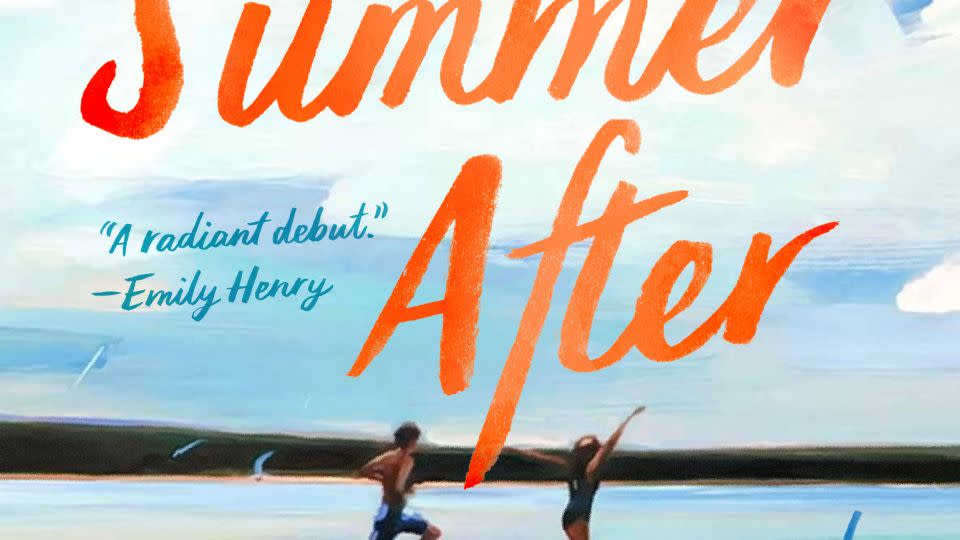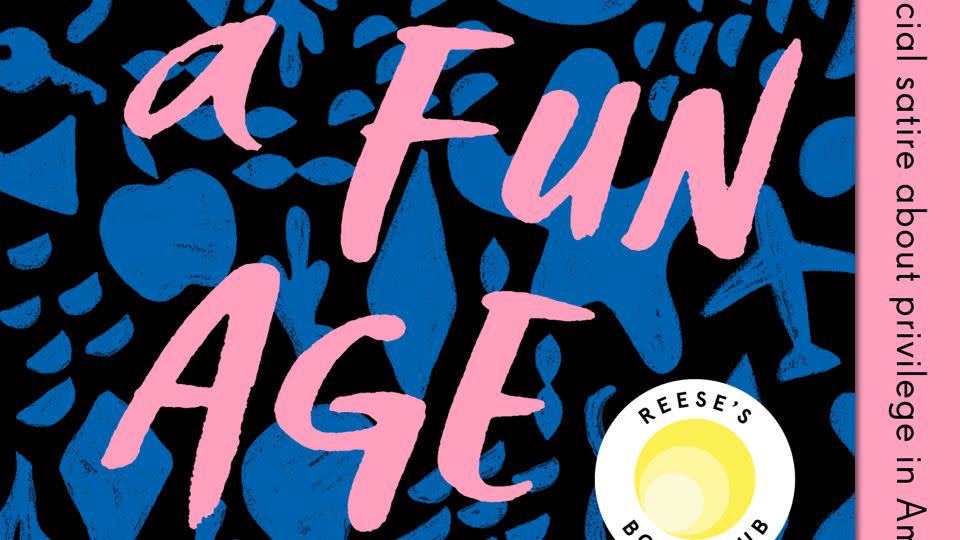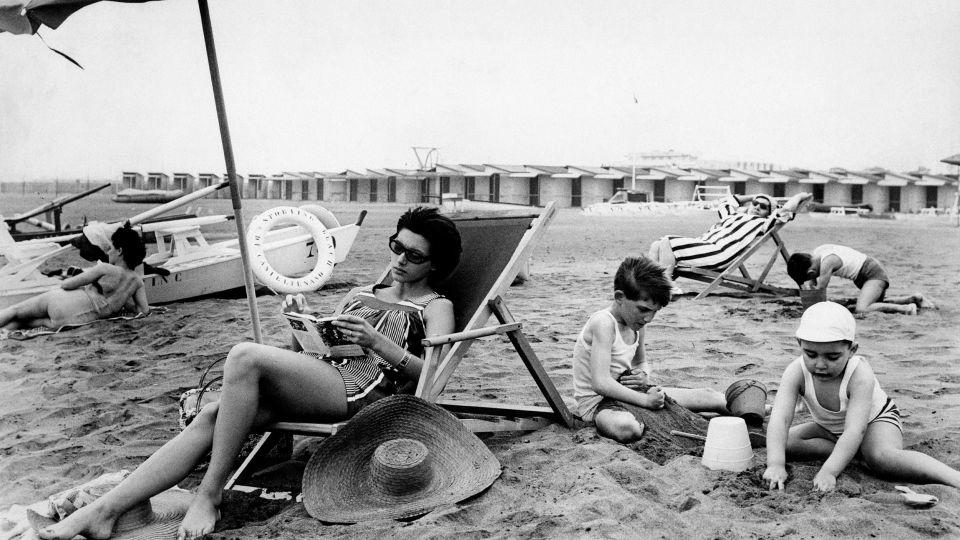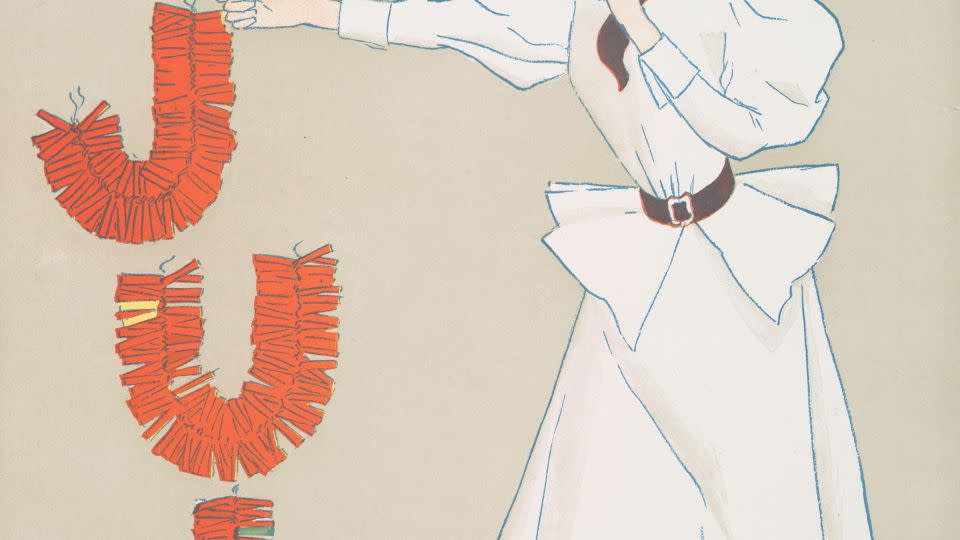These books offer breezy escapism. That doesn’t mean they’re silly
Summer is almost here, and you’re looking forward to that long-awaited vacation. You can even picture it: The sun is shining, the waves are rolling gently and you’re curling up with a book.
Perhaps you’re diving into a steamy romance novel or losing yourself in a page-turning thriller. Maybe a work of romantasy is captivating you instead. Whatever your flavor of escapism, it’s likely that it could be classified as a “beach read” — that oft-dismissed, unofficial category of books that readers gravitate toward in the warmer months.
But what exactly constitutes a beach read? And where did that idea come from? Here’s what to know about the popular term.
What makes a ‘beach read’
A beach read is, naturally, the sort of book one might read at the beach — or at a lake, a resort or another typical summer destination.
The books populating “beach read” round-ups from booksellers, publishers and periodicals generally fall into the category of commercial fiction, designed to lure in readers with their saturated covers and playful illustrations. They’re also almost always marketed to women.
Amanda Bergeron, who acquires contemporary and historical book club fiction for Penguin Random House’s imprint Berkley, has published several authors whose books frequently appear on “beach read” lists: Carley Fortune, Jasmine Guillory and Emily Henry, to name a few. When looking for the next big summer read, Bergeron says she’s drawn to fast-paced stories with compelling characters. If it transports the reader to another location, all the better.
“It’s something that you’re excited to spend time with and you can’t put down — something that you’re just so eager to get back to that it will go with you wherever you go, whether that’s the park, the pool, the couch, your yard or even the beach,” she says.

Some books just scream summer, presenting an obvious opportunity to be marketed as a beach read, according to Bergeron. If it takes place in the summer, perhaps on an island or another breezy locale, there’s a good chance it could be a beach read. Sometimes, the “beach read” designation is so fitting that it announces itself in the title, like Fortune’s 2022 romance novel “Every Summer After,” Jenn McKinlay’s 2023 rom-com “Summer Reading” or Henry’s aptly named 2020 “Beach Read.”
While the romance genre tends to dominate the “beach read” landscape, the label isn’t limited to romance, says Bergeron. A beach read can just as easily be a suspenseful thriller or a puzzle-box mystery novel — at least for Bergeron, it’s a book that readers will want to discuss with others and bring along with them on vacation.
In other words, a beach read doesn’t ask the reader to ponder the grim realities of the modern world or plunge into the depths of the human experience. Rather, it offers a break from the slog of daily life and the constant drumbeat of depressing news stories.
“For God’s sake, I do not want to be challenged,” Celeste Ballard declared in a 2014 humor column for The New Yorker about how to pick a summer read. “No ‘hard’ literature that I have to slog through to discover a deep and twisted meaning.”
Why some dislike the term ‘beach read’
Even though the “beach read” designation can go hand in hand with commercial success (books labeled as such frequently make bestseller lists), it’s also a loaded term.
Author Jennifer Weiner, whose books are often categorized as beach reads, rejected the label for years before eventually embracing it — an internal conflict she examined in a 2020 essay for Goodreads.
“It’s not hard to discern a whiff of Coppertone-scented sexism in the label,” she wrote. “Fast-paced, diverting books that are by or for men are called thrillers or mysteries or sometimes just plain old books, while the ladies get every kind of label, from chick lit to women’s fiction to upmarket women’s fiction to domestic fiction to, well, beach books.”
Books labeled as beach reads tend to emphasize plot and characters over elegant prose and heavier themes. To some, the implication is that the book is less serious or less worthy of one’s time.

Dakota Johnson, who launched a book club earlier this year, seemed to echo that assumption in an interview with Bustle: “Our book club is literary fiction. It’s not beach reads. It’s not silly,” she said.
Though the term “beach read” is commonly associated with frothy romance novels, Bergeron says that notion can be reductive. Beach reads can absolutely be frivolous — sometimes, that’s exactly what you need — but some of the most celebrated beach reads of the past few years explore weightier topics all while delivering on the promise of fun.
For instance, Fortune’s 2023 bestseller “Meet Me at the Lake” depicted postpartum anxiety and the loss of a family member, while Kiley Reid’s buzzy 2019 debut “Such A Fun Age” dealt with race and privilege. “A Love Like the Sun,” a forthcoming novel from Riss M. Neilson, includes representation of chronic illness.
“The fact that writers are able to do all that and offer readers an escape or a big heart hug is just really exciting,” Bergeron says.
The ‘summer read’ is a 19th century invention
The term “beach read” first appeared in literary periodicals around 1990, according to an article by the Los Angeles Public Library — though it’s unclear who coined it.
The concept of the summer read goes back much further, says Donna Harrington-Lueker, a professor of English and communications at Salve Regina University and author of Books for Idle Hours: Nineteenth-Century Publishing and the Rise of Summer Reading. Though now ingrained in our culture, the notion of summer reading was actually a 19th century invention of the publishing industry that sprung up in response to the creation of the summer vacation.
Summer reading was initially a ritual enjoyed by rich men, who could afford to engage in leisure travel and unwind with poetry and literature, according to Harrington-Lueker. That changed in the mid-to-late 19th century as the US rapidly industrialized after the Civil War. The construction of railroads and grand hotels made summer vacations more accessible for the middle classes, giving rise to what Harrington-Lueker calls the “summer novel.”

The summer novel was specifically geared toward women, Harrington-Lueker explains. The books generally took place over the summer at a resort and tended to follow the rhythms of the season: There might be scenes anchored around a picnic or a fireworks display, with detailed descriptions of what the female characters were wearing. Typically, the books ended with the heroine getting engaged.
“These become lessons in how you practice summer leisure, and they become very popular,” Harrington-Lueker says.
The proliferation of the summer novel also generated backlash from some religious leaders who considered them a temptation and devoid of morality. The Reverend T. De Witt Talmage notably declared in an 1876 sermon that “there is more pestiferous trash read among the intelligent classes in July and August than in all the other ten months of the year.”
“Would it not be an awful thing for you to be struck with lightning some day when you had in your hand one of these paper-covered romances—the hero a Parisian roué, the heroine an unprincipled flirt … ?” he chided at the time.

But throughout the late 1800s, the publishing industry worked to counter such notions and present summer reading as something desirable, Harrington-Lueker says. Magazines such as The Atlantic Monthly or Harper’s ran advertisements with women clad in muslin dresses, novel in hand, while literary critics extolled the benefits of lighter reading.
“The cakes and ale of literature have their legitimate time and place after the more solid intellectual dishes of the past season have been digested,” an 1887 editorial in the literary review Book Buyer reads.
Much like today, summer reads at the time were seen as an escape from the turmoil of the real world. One 1885 magazine column Harrington-Lueker encountered in her research called that summer’s novels “peculiarly trivial” and hypothesized that publishers were responding to the cholera epidemic, believing “that the general mind will be so far distraught by anxiety as to have no attention to spare for being critical.”
Reading for escape vs reading for enrichment
As publishers solidified the association between summer and light reading, some institutions promoted more serious reading during the season, Harrington-Lueker said.
One notable example is the Chautauqua movement, a late 19th and early 20th century educational program that sought to help Americans improve themselves through reading. From schools requiring students to read so-called classics in the summer to the anti-racist reading lists that were ubiquitous in 2020, the idea of summer as a time for personal enrichment persists today. Indeed, some people reach for heftier titles during vacation precisely because they finally have the time to dig into them.
“Summer reading becomes a point where people automatically begin to think, ‘How should we be spending our summer? Should we be spending it with escapist fiction that’s going to renew us, that’s going to give us this time apart from a more difficult world? Or should we be using it to engage with topics of more consequence?’” Harrington-Lueker says.
That push and pull between reading as escapism and reading as enrichment has long been a part of American culture, Harrington-Lueker adds. In recent years, she says she’s observed that the titles appearing on summer reading lists from The New York Times, Oprah’s Book Club and other cultural tastemakers seem less escapist than they were in previous years.
But from Bergeron’s perspective, plenty of readers are still looking for a respite — and this year’s offerings (she name-checked Ashley Poston’s “A Novel Love Story,” Kirsty Greenwood’s “The Love of My Afterlife” and Tia Williams’ “A Love Song for Ricki Wilde”) give them plenty of opportunities to do so.
“Readers want to be transported,” she says. “(When you think of an) escape often you think light, but I think it’s the ability to inhabit another world or another set of shoes and just spend time in those pages.”
At a time when the world feels uncertain and overwhelming, Bergeron says, the beach read beckons.
For more CNN news and newsletters create an account at CNN.com

